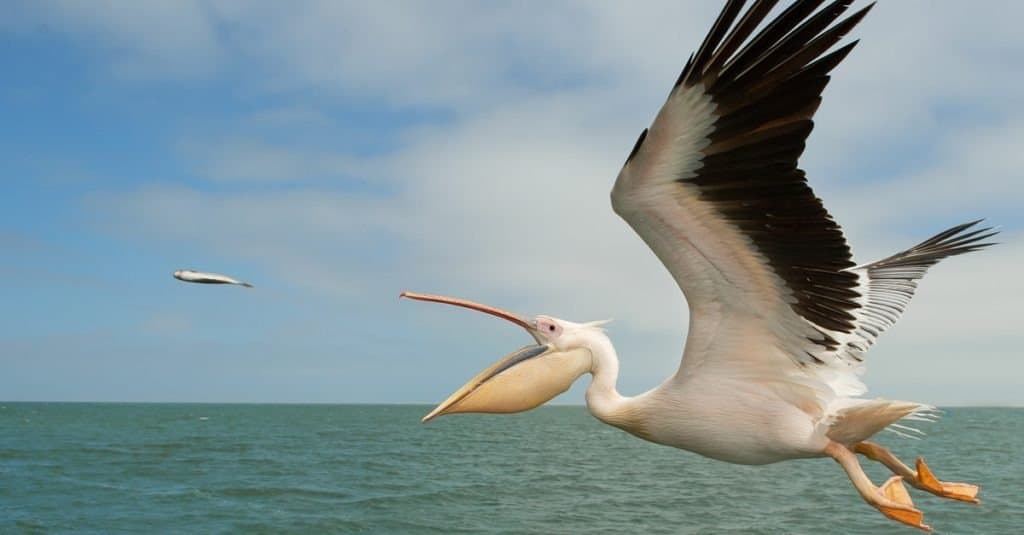Continue reading for our analysis...

This bird might have bit off a bitten more than it could chew. Watch the video below which shows a pelican successfully eating a pigeon, feathers and all!
The clip begins with a small group of pelicans waddling about a grassy park. Surrounding them is a larger group of pigeons who are picking at the ground in search of food. In the background, one pelican walks over and swiftly grabs a pigeon. A group of onlookers gasps in excitement as the pelican attempts to swallow the pigeon whole.
During this whole process, the pigeon kicks and flaps from within the pelican’s mouth, putting up a noble fight! For the next few minutes, the pigeon struggles in the pelican’s mouth, all the whole pelican struggles to swallow it down further.
After moving away from the crowd, the pelican can force the pigeon down its throat, happy with its full meal!
Pelican Mouths

A pelican’s gular pouch is actually an extension of its throat and esophagus!
©MZPHOTO.CZ/Shutterstock.com
One of the most characteristic features of a pelican is its large gular pouch, which is the pocket formed of skin in the mouth and esophagus. Their pouch extends from their bill to the bottom of their throat.
Different birds have different uses for gular patches, such as thermoregulation, reproduction, and even protection for offspring. Pelicans, on the other hand, use their gular pouch mostly for hunting.
To hunt, they fly low to the water, close enough to almost touch it with their bodies. After finding a school of fish (or some other small aquatic animal), they will open their mouths and use their gular patch like a fishing net to catch prey.
Most pelicans will eat small fish like sardines, herring, and anchovies. It isn’t uncommon for them to eat other things like crabs, frogs, and lizards if they are present.
Interestingly enough, when hunting for fish, they will sometimes group to herd schools in shallow water. This makes it easier for them to scoop up prey during the hunt!
Social Behavior
As mentioned, pelicans do tend to group when hunting, but it doesn’t stop just there. They are extremely gregarious birds, and they commonly flock for a variety of reasons.
Aside from hunting, they will group during the breeding seasons. During this period, males give courtship displays while females pick a suitable mate. After mating has begun, these birds will group up in coastal areas to form nesting colonies.
Due to their relatively conspicuous social behavior, there are a few different names that can refer to a large group of pelicans. For instance, most people use “flock” or “pod” to refer to a large group. Additionally, some sources note that “scoop” is another word that can describe a group of pelicans.
During their breeding season, groups are typically larger, and can be referred to as a “raft” or “squadron.” Lastly, some regions of the world refer to them as a “brief” or a “pouch.” There are seemingly endless words that you can use to describe groups of pelicans!
Thank you for reading! Have some feedback for us? Contact the AZ Animals editorial team.







